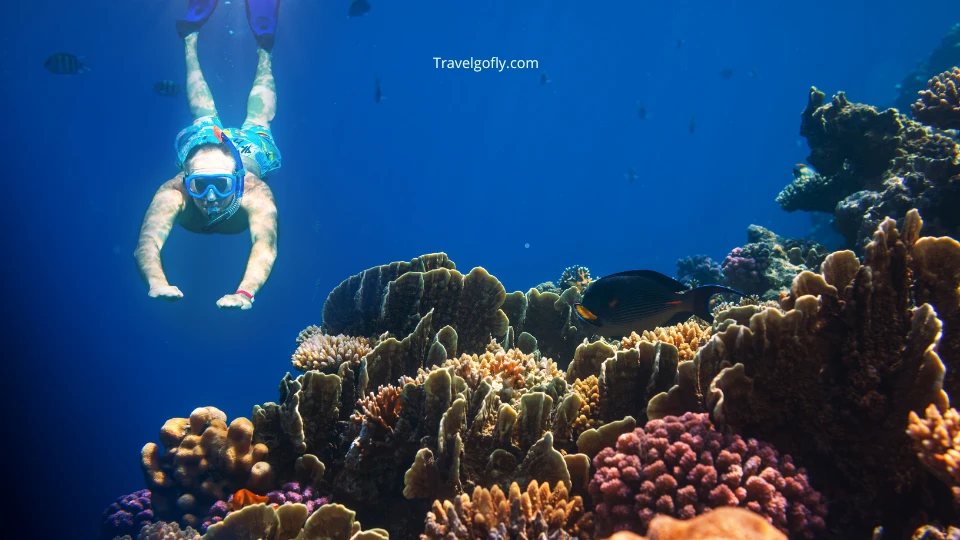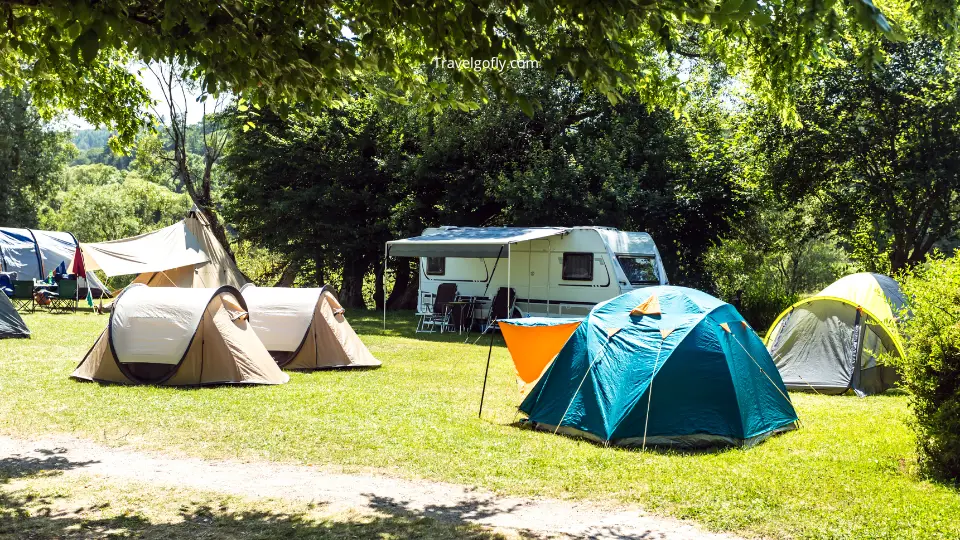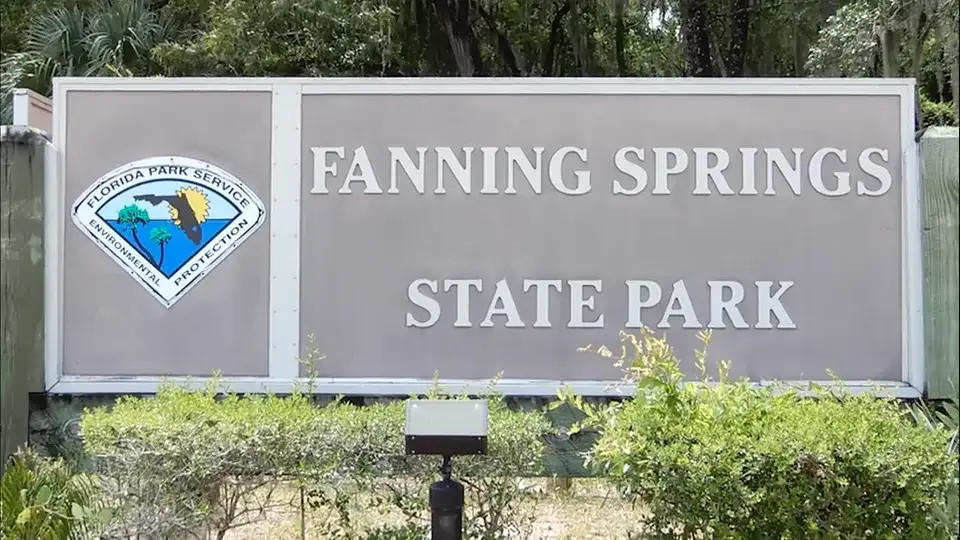Tucked along the winding Suwannee River in North Central Florida, Fanning Springs State Park invites visitors to experience the untouched beauty of Old Florida. Spanning over 200 acres, this tranquil haven centers around one of Florida’s 33 first-magnitude springs, where an impressive 65 million gallons of crystal-clear, 72-degree water rise daily from ancient limestone caverns. For travelers seeking an authentic spring adventure away from the typical tourist trails, Fanning Springs State Park offers a perfect blend of natural wonder, rich history, and outdoor recreation that captures the wild essence of Florida.
Unlike many commercialized springs across Florida, this park maintains its untouched character while providing essential amenities for day trips and camping adventures. Whether you’re drawn by the spring’s perfect year-round swimming temperature, the diverse wildlife viewing opportunities, or the peaceful river access for paddling, this hidden gem offers something special for every nature lover.
Getting to Fanning Springs State Park in Florida
Getting to Fanning Springs State Park is straightforward, with the park conveniently located on US Highway 19/98 in the small town of Fanning Springs. The park sits approximately 20 miles southwest of Live Oak and 25 miles northwest of Chiefland, making it accessible from several major Florida cities.
From Gainesville (45 minutes), take US-441 North to US-19/98 North, following signs to Fanning Springs. Jacksonville visitors (90 minutes) should take I-10 West to Live Oak, then US-129 South to US-19/98 West. Those traveling from Tallahassee (2 hours) can take US-19 South directly to the park.
The park’s address is 18020 NW US Highway 19, Fanning Springs, FL 32693. GPS coordinates will guide you directly to the entrance, where ample parking accommodates both day-use visitors and RV campers. No public transportation serves the area, so personal vehicles or rental cars are necessary.
The closest airports include Gainesville Regional Airport (50 miles) and Jacksonville International Airport (100 miles). Cedar Key, a charming coastal town, lies just 30 minutes south, making it possible to combine your springs visit with Gulf Coast exploration.
History and Heritage of Fanning Springs State Park
The springs that define this park have attracted humans for thousands of years. Archaeological evidence reveals multiple Aboriginal sites throughout the area, where Native American tribes recognized the spring’s life-giving properties and established settlements nearby. Spanish explorers later documented these crystal waters during their expeditions through Florida’s interior.
 During the Second Seminole War (1835-1842), the U.S. military established Fort Fanning near the springs in 1838. Originally named “Fort Palmetto,” the wooden fortification was later renamed to honor Colonel Alexander Campbell Wilder Fanning (1788-1846), who served with distinction under General Andrew Jackson during the First Seminole War. Colonel Fanning earned recognition for leading a courageous charge in a battle near the Withlacoochee River, demonstrating the bravery that would immortalize his name at this peaceful springs location.
During the Second Seminole War (1835-1842), the U.S. military established Fort Fanning near the springs in 1838. Originally named “Fort Palmetto,” the wooden fortification was later renamed to honor Colonel Alexander Campbell Wilder Fanning (1788-1846), who served with distinction under General Andrew Jackson during the First Seminole War. Colonel Fanning earned recognition for leading a courageous charge in a battle near the Withlacoochee River, demonstrating the bravery that would immortalize his name at this peaceful springs location.
The fort’s humid, subtropical environment and wooden construction meant that no physical remnants survive today, but the area’s military significance during Florida’s territorial period adds historical depth to your visit. The contrast between the fort’s wartime purpose and the springs’ current role as a recreational haven reflects Florida’s transformation from frontier territory to vacation destination.
Local families have passed down stories of the springs serving as a community gathering place for generations. Before the state park’s establishment, residents would hold church baptisms, community picnics, and summer swimming parties at the springs, traditions that continue today in a more structured setting.
Top Things to Do at Fanning Springs State Park
Swimming and Snorkeling in the Crystal Springs
The park’s main attraction remains its first-magnitude spring, where 72-degree water maintains perfect swimming temperature year-round. The spring’s clarity allows visibility of 30+ feet, making it ideal for snorkeling and underwater photography. Unlike many Florida springs, Fanning Springs features a manageable depth that welcomes swimmers of all abilities while still offering interesting underwater limestone formations to explore.
 The spring run extends approximately 200 yards before joining the Suwannee River, creating a unique ecosystem where fresh spring water meets the tannin-stained river. This mixing zone attracts diverse fish species and occasionally, Florida manatees seeking the spring’s warm water refuge during cooler months.
The spring run extends approximately 200 yards before joining the Suwannee River, creating a unique ecosystem where fresh spring water meets the tannin-stained river. This mixing zone attracts diverse fish species and occasionally, Florida manatees seeking the spring’s warm water refuge during cooler months.
Canoeing and Kayaking on the Suwannee River
Water enthusiasts can launch directly from the park into the Suwannee River, accessing 200+ miles of paddling opportunities. The park’s boat ramp accommodates kayaks, canoes, and small motorboats, though manatee protection requires idle speeds in the spring run area.
For multi-day adventures, the Suwannee River Wilderness Trail passes directly through the park, offering primitive camping opportunities for paddlers. The river’s dark tannic waters create striking photographs when contrasted with the spring’s crystal clarity.
Nature Trails and Birdwatching at Fanning Springs
The park’s network of boardwalks and nature trails winds through upland mixed forest and floodplain communities. A cypress boardwalk leads from the parking area to the spring, offering elevated views of the surrounding wetlands and excellent wildlife photography opportunities.
| Species Type | Common Sightings | Best Viewing Times |
|---|---|---|
| Birds | Great Blue Heron, Anhinga, Wood Duck | Early morning, late afternoon |
| Mammals | River Otter, White-tailed Deer | Dawn, dusk |
| Reptiles | Alligator, Various Turtle Species | Warm sunny days |
| Aquatic | Manatee (seasonal), Largemouth Bass | Winter months (manatees) |
Family Fun and Picnicking at the Park
Multiple picnic areas with tables and grills spread throughout the park under mature live oaks, providing natural shade for extended family gatherings. The park’s compact size keeps children within easy supervision distance while offering enough variety to maintain interest.
A playground near the main spring area gives families additional entertainment options, while the gentle spring current provides safe water play for younger children under parental supervision.
Camping and Lodging Near Fanning Springs State Park
Primitive Camping Along the Suwannee River
Fanning Springs State Park offers limited primitive camping exclusively for visitors arriving by foot, bicycle, or watercraft via the Suwannee River Wilderness Trail. This backcountry camping experience appeals to paddlers seeking authentic wilderness immersion without developed campground amenities.
 The primitive site sits atop the bank above the canoe launch, providing Suwannee River views and easy water access. Campers must be completely self-sufficient, as the site lacks electricity and running water. The nearest facilities include restrooms approximately 600 feet away and a cold-water outdoor shower.
The primitive site sits atop the bank above the canoe launch, providing Suwannee River views and easy water access. Campers must be completely self-sufficient, as the site lacks electricity and running water. The nearest facilities include restrooms approximately 600 feet away and a cold-water outdoor shower.
Nearby Camping and Glamping Options
For visitors seeking developed camping, Manatee Springs State Park (20 minutes north) offers full-service family campgrounds with electric hookups, bathhouses, and camp stores. Private glamping options have recently become available near both parks, with luxury tent accommodations starting around $120 per night.
Best Lodging Near Fanning Springs and Cedar Key
The town of Fanning Springs provides limited lodging, with most visitors staying in Live Oak (20 miles) or Chiefland (25 miles) for hotel accommodations. Cedar Key (30 minutes south) offers charming bed-and-breakfasts and waterfront inns for those combining springs visits with coastal experiences.
Several Airbnb properties in the surrounding rural area provide cabin rentals and farmhouse accommodations, often featuring private springs access or river frontage for extended stays.
Visitor Information and Travel Details for Fanning Springs

Park Hours and Entrance Fees
Fanning Springs State Park welcomes visitors from 8 a.m. until sundown, 365 days per year. The consistent schedule makes trip planning simple regardless of season or weather conditions.
Admission fees remain among Florida’s most affordable outdoor recreation options:
- $6 per vehicle (up to 8 people)
- $2 for pedestrians, bicyclists, and extra passengers
- $2 per person arriving by boat (honor system payment)
Annual pass holders receive free admission, making the Florida State Parks Annual Pass an excellent value for frequent visitors.
Contact Information Phone: (352) 463-3420 Address: 18020 NW US Highway 19, Fanning Springs, FL 32693
Park Facilities and Visitor Amenities
The park provides essential amenities while maintaining its natural character:
- Accessible restrooms and outdoor showers
- Picnic tables with grills throughout the park
- Paved parking areas
- Boat ramp and canoe/kayak launch
- Nature trail system with boardwalks
- Emergency phone access
Park Rules, Safety Tips, and Wildlife Protection
Standard Florida State Park regulations apply, including no alcohol, no pets in the water, and no collecting of natural resources. Swimming occurs at your own risk with no lifeguards on duty. The spring’s limestone bottom can be slippery, requiring careful footing.
Manatee protection rules require idle speed operation in the spring run, with substantial fines for harassment or injury to these protected marine mammals.
Expert Tips for Visiting Fanning Springs State Park
Best Time to Visit Fanning Springs State Park
While the spring’s 72-degree temperature remains constant, seasonal considerations affect the overall experience. Summer weekends can become crowded with local families, making weekday visits more peaceful for photography and contemplation.

Winter months offer the best manatee viewing opportunities, as these gentle giants seek the spring’s warm-water refuge. December through February provides the highest likelihood of manatee encounters, though sightings remain unpredictable.
Spring and fall deliver ideal weather conditions for hiking and picnicking, with comfortable temperatures and reduced insect activity. However, these shoulder seasons coincide with peak camping demand at nearby parks.
What to Pack for Your Fanning Springs Adventure
Essential items for your Fanning Springs adventure:
- Underwater camera or waterproof phone case
- Snorkeling gear (mask, snorkel, fins)
- Quick-dry swimwear and towels
- Reef-safe sunscreen
- Insect repellent (DEET-based recommended)
- Cooler with ice and plenty of water
- Comfortable walking shoes with good traction
- First aid supplies
Photography Tips for Capturing Fanning Springs Beauty
The spring’s clarity creates exceptional underwater photography opportunities. Bring polarizing filters to reduce surface glare and enhance underwater visibility from above. Early morning light filtering through the cypress canopy creates magical atmospheric conditions.
Hidden Spots and Local Secrets of Fanning Springs
Experienced visitors recommend exploring the spring run’s lower section where it meets the Suwannee River. This mixing zone often reveals diverse fish species and creates interesting color contrasts for photography.
The park’s nature trail system includes several unmarked observation points overlooking wetland areas. These spots provide excellent wildlife viewing opportunities away from the main spring’s activity.
Best Photography Times at Fanning Springs State Park
Golden hour (first hour after sunrise, last hour before sunset) transforms the park’s cypress-dominated landscape into a photographer’s paradise. The spring’s steam becomes visible during cooler mornings, creating mystical atmospheric effects.
Frequently Asked Questions About Fanning Springs State Park
Can you camp at Fanning Springs State Park? Yes, but camping is limited to primitive sites accessible only to visitors arriving by foot, bicycle, or watercraft via the Suwannee River Wilderness Trail. No developed campground exists within the park. For traditional camping with amenities, nearby Manatee Springs State Park offers full-service facilities.
Are there cabins at Fanning Springs State Park? No cabins exist within Fanning Springs State Park itself. However, private glamping operations near the park offer luxury tent accommodations, and vacation rental cabins are available throughout the surrounding area. Cedar Key and Live Oak provide additional lodging options.
What are the current entrance fees for Fanning Springs State Park? Standard admission costs $6 per vehicle (up to 8 people), $2 for pedestrians/bicyclists, and $2 per person arriving by boat. Florida State Parks Annual Pass holders receive free admission. These rates remain among the state’s most affordable outdoor recreation values.
When is the best time to see manatees at Fanning Springs State Park? Manatee sightings occur most frequently during winter months (December-February) when these marine mammals seek the spring’s constant 72-degree water temperature. However, sightings remain unpredictable, and visitors should never expect guaranteed wildlife encounters.
Can you bring dogs to Fanning Springs State Park? Dogs are welcome in the park on leashes but are prohibited from entering the water. This regulation protects both aquatic ecosystems and the animals themselves. Pet owners should bring waste bags and maintain control of their dogs around wildlife.
How deep is the main spring at Fanning Springs State Park? The main spring reaches approximately 25 feet deep, making it accessible to swimmers and snorkelers of various skill levels. The spring’s limestone bottom and excellent visibility allow clear depth perception, though swimmers should exercise caution around underwater formations.
Plan Your Trip to Fanning Springs State Park
Fanning Springs State Park represents everything that makes Florida’s natural areas special: crystal-clear waters, diverse wildlife, rich history, and peaceful settings that restore the soul. Whether you’re planning a quick day trip for swimming and picnicking or organizing a multi-day paddling adventure along the Suwannee River, this park delivers authentic Florida experiences without commercial distractions.
 The park’s combination of accessible amenities and wilderness character makes it perfect for introducing children to Florida’s natural wonders while providing enough depth to satisfy experienced outdoors enthusiasts. Its location along the Suwannee River Wilderness Trail connects it to hundreds of miles of additional exploration opportunities.
The park’s combination of accessible amenities and wilderness character makes it perfect for introducing children to Florida’s natural wonders while providing enough depth to satisfy experienced outdoors enthusiasts. Its location along the Suwannee River Wilderness Trail connects it to hundreds of miles of additional exploration opportunities.
Consider combining your Fanning Springs visit with trips to nearby Manatee Springs State Park for comparison of different spring ecosystems, or venture south to Cedar Key for coastal experiences that showcase Florida’s diverse natural environments.
For current park conditions, event schedules, and reservation information, visit the official Florida State Parks website or call (352) 463-3420. Don’t forget to check out our comprehensive guides to other North Florida springs and Suwannee River paddling destinations for planning your complete Florida springs adventure.
Have you experienced the crystal waters of Fanning Springs State Park? Share your favorite memories, photography tips, or hidden discoveries in the comments below – your insights help fellow travelers make the most of their Florida springs adventures!
